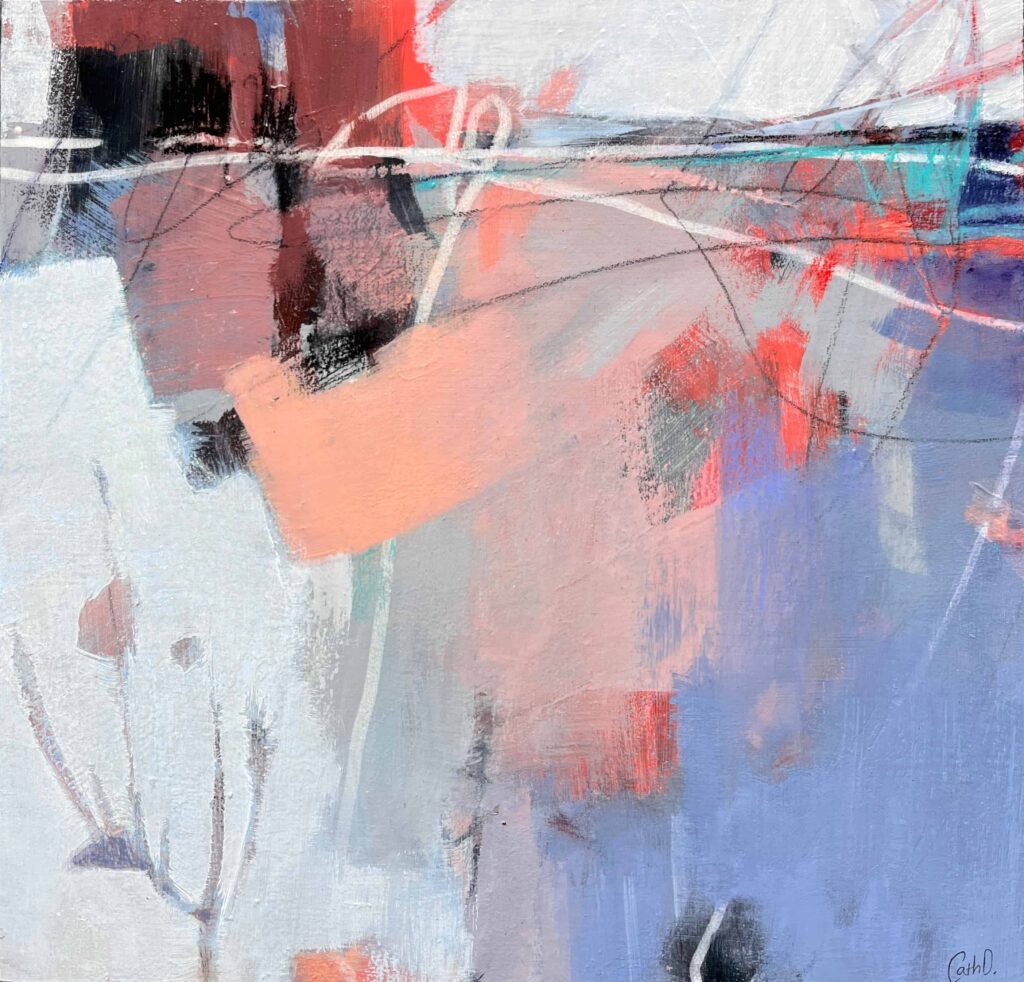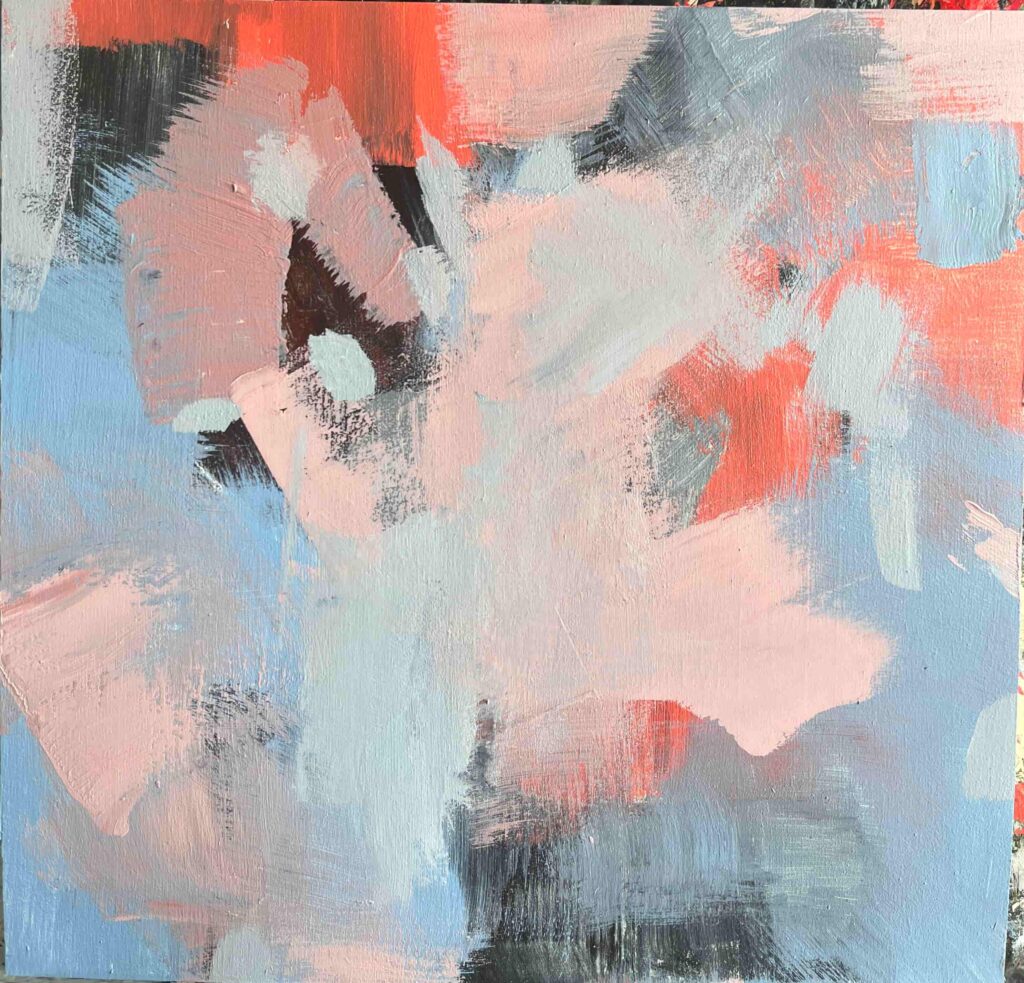The Making of “Seeds of Time”
As I’ve been embracing more intuitive ways of creating that begin with no plan, I’ve been taking photos of my artworks as they develop. I’m curious to look back and see their evolution. And mine!
Seeds of Time began as a “throwaway board”. Throwaway boards are an indea from Nicholas Wilton. Keep a board next to you while you work and use it to wipe your brushes and other tools off on. Don’t try to make anything of it. At the end of your painting session, have a look and see what your throwaway board looks like. If it’s got something interesting happening, add it to your boards in your series and grab another throwaway board.
I liked the softness and layering of this, and the contrasts between the light and dark colours, and I liked that there were shapes/ colour blocks of different sizes.
I wanted to keep it free and, since I love line work/ drawing, I’ve been working on developing my approaches to integrating line work into my paintings. So I added some fun linework with my Posca marker.
The linework begins to create a composition with some shapes and forms and a directionality to the movement. It’s amazing how the introduction of a horizontal line immediately makes it feel like a landscape!
With this basic composition in place, I defined the “landscape” a bit more with a few more different colours and shapes, and some more value contrast. I wanted the bottom left area to be much lighter, but not empty. I’m not sure where the little shrub emerged from, but I liked it. I added a bit more pencil and waterbased pastel crayon work, for more detail, texture, and movement.
With the composition in place, my last moves were about refining. I wanted that light area at bottom left to be much smoother, in contrast to the textured shrub and the textured areas at top left. I really liked the shape of the white Posca marker line at bottom right but it distracted from the overall composition. I wanted the interest to be mostly with the shrub in the foreground and the view/ horizon in the distance. So I deleted and simplified that bottom right area.

It’s interesting to look back and see which marks endured and which ones had to be cut. I always find it hard to paint over parts I love, but sometimes that’s what has to go, for the good of the painting as a whole.



